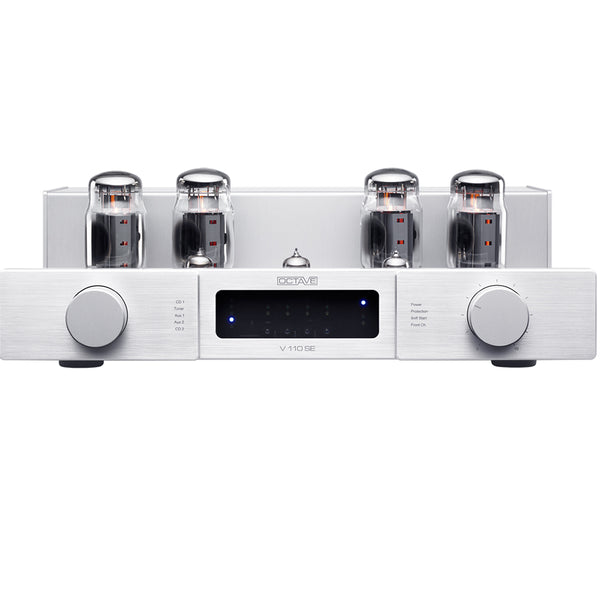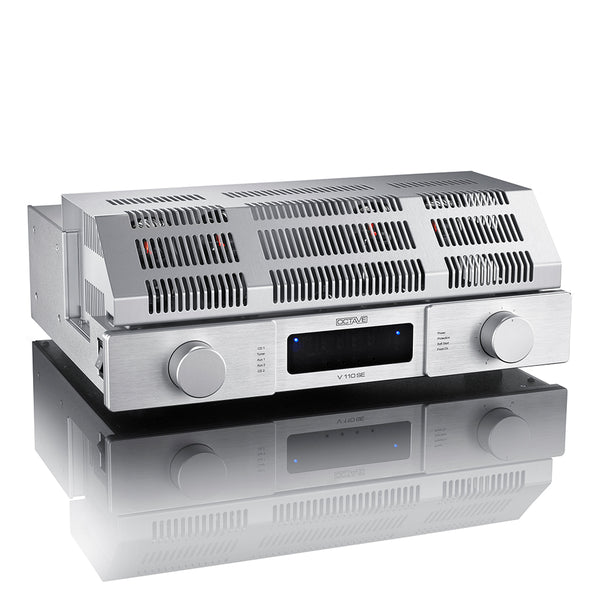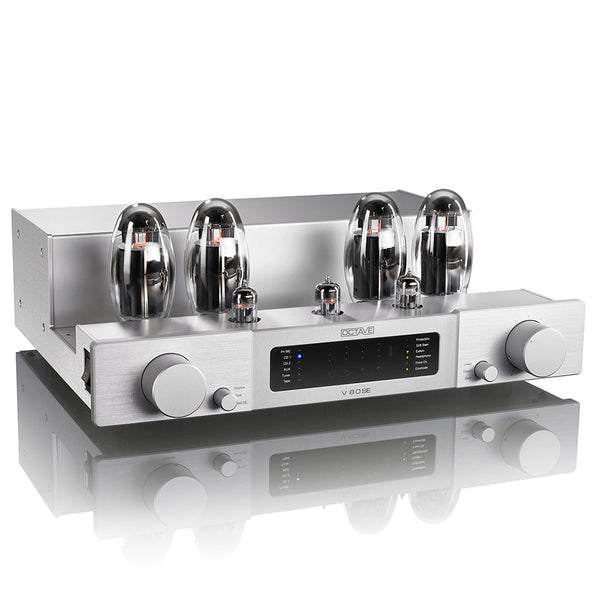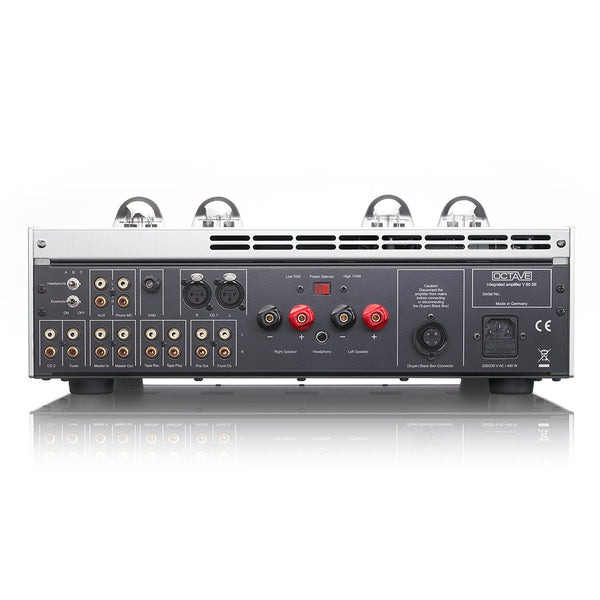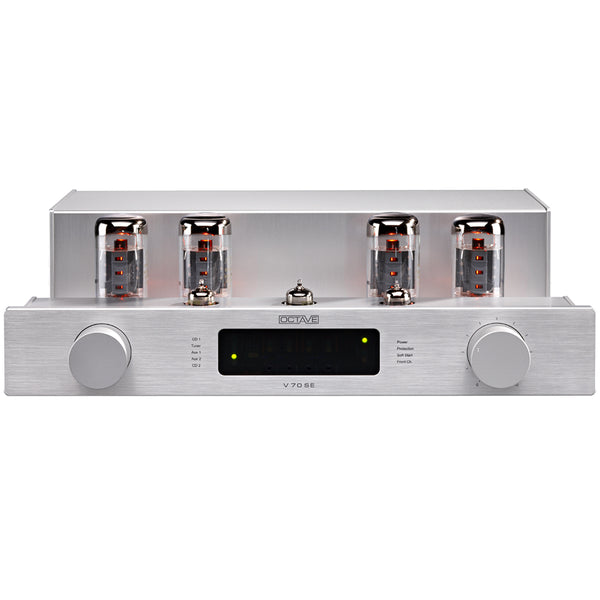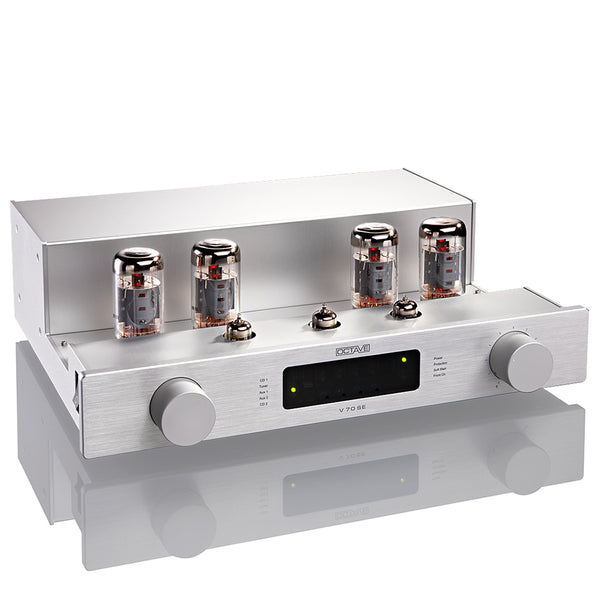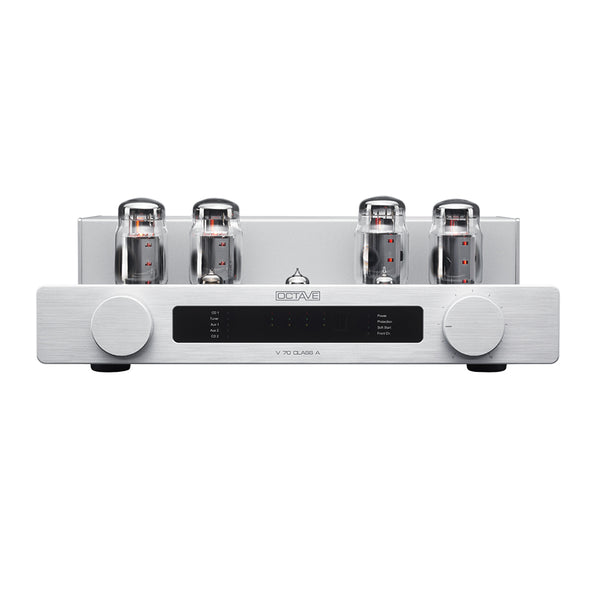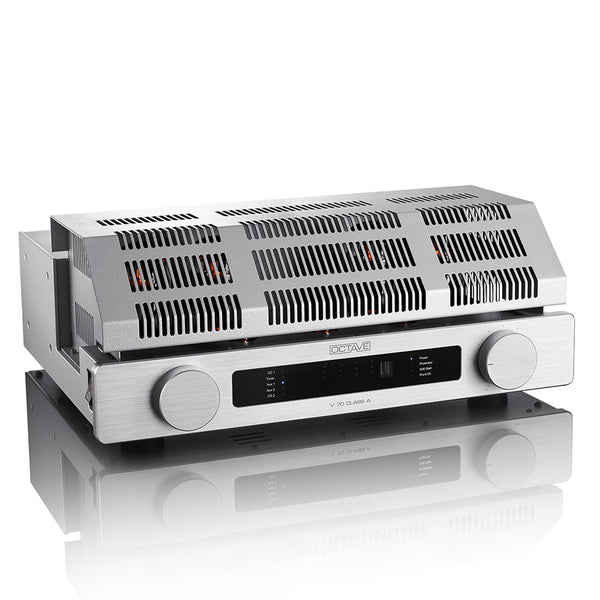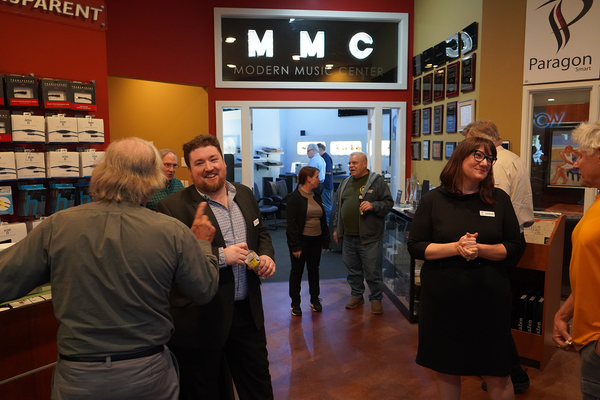
Octave Tube Amps & Preamps: Perfection in Every Detail

Sound in its Most Beautiful Way
Octave stands out for its belief in achieving honest musicality with tubes in high fidelity. Their success lies in the Octave technology, combining old tube components with modern electronics for exceptional sound performance. The newly developed circuits contribute to allowing the tubes to fully develop their audiophile potential.
Octave amplifiers are designed to transport the fun and emotion in music, creating an unforgettable listening experience. Octave amplifiers provide a soulful experience by making music vibrate with emotion.

Handmade in Germany
Octave has been building tube amplifiers for over 35 years with high reliability and longevity. The amplifiers are designed with control and safety electronics, high-quality components, and careful handwork.
Every Octave amplifier is developed and manufactured in-house at their headquarters in Karlsbad, Baden, Germany. The company prioritizes sustainability and longevity, ensuring that any Octave device, no matter its age, can be repaired directly in-house.
Octave at Paragon SNS
Frequently Asked Questions
Which cables are suitable for tube power amplifiers?
Cable manufacturers sometimes offer cables that are specifically designed for tube amplifiers. These cables can be of good quality, but Octave tube amplifiers usually do not require any special cables. Speaker cables can be both highly capacitive and highly inductive. Tube power amplifiers often cope better with complex loads than transistor power amplifiers; in the small signal range, low-capacitance cables should be preferred. However, this is only important for lengths over 4 m.
Does the aging of the tubes lead to a loss of sound?
No. Tubes typically remain sound-stable until the end of their life. The soft start technology plays a significant role in this stability. The end of the lifespan of power tubes can be recognized by the fact that they can no longer be adjusted correctly. Output tubes can have a service life of up to 5 years depending on the load. Driver tubes cannot be checked, they usually last 5 - 10 years.
What is the purpose of gain switching?
Speakers with an efficiency above 98 dB cause problems when adjusting the volume. Since the volume has to be set in the lowest area of the control, it cannot be adjusted very sensitively. To compensate for this shortcoming, gain switching is provided. The gain is reduced by a factor of 4, the volume can be adjusted better and at the same time the background noise decreases accordingly.
What is the significance of the impedance and efficiency of loudspeakers?
Impedance and efficiency of modern speakers are not a criterion for operation on Octave amplifiers. The frequently quoted damping factor is usually no guarantee for the so-called control of the loudspeaker. In practice, speakers with an efficiency of 85 dB or more are suitable partners for tube amplifiers. The high stability of the Octave power amplifier technology even allows the connection of speakers that have impedance minimums of 2 ohms in some areas.
Why do tube amplifiers rarely have balanced inputs?
In contrast to transistor output stages, tube output stages can (sensibly) be designed neither symmetrically nor as a bridge output stage. There are a few "quasi-symmetrical" tube power amplifiers, but upon closer inspection they make little sense because the technical effort is very high and tube tolerances deteriorate the concept. Therefore, the asymmetrical variant is fundamentally better in terms of sound for tube devices and also has much better long-term stability.
How can you recognize a defective tube?
Three different failure symptoms can occur with power tubes:
1. Filament break: The tube no longer glows
2. Cathode layer defective: The tube glows, but no current flows. This error can be recognized on the BIAS display because, despite adjustment, the Minus LED stays on permanently
3. Short circuit/contact error within the tube: Normally the electronic fuse is activated and the red OFF LED lights up in this condition
BIAS adjustment is no longer possible
With errors 1 and 2, the device still plays, but the channel with the defective tube is quieter. At high listening levels, distortion occurs; at low levels, you may not even notice the defective tube. If error 3 occurs, the device is usually switched off electronically. You may hear noise before switching off, but this will not cause any damage.
Can you operate the Octave amplifier without speakers?
Yes, all Octave amplifiers are completely idle-proof. This means that no damage can occur when operating without speakers.

